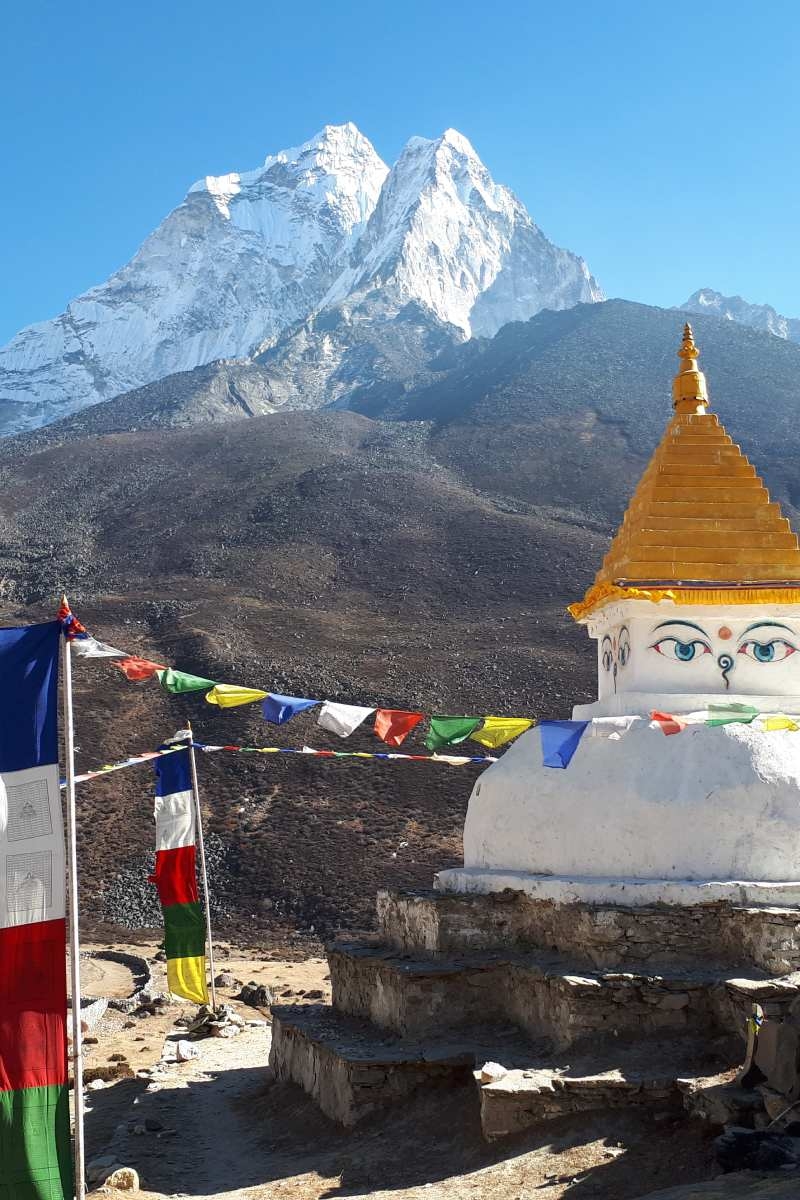Trip Difficulty: Challenging
Activities: Trekking / Hiking
Best Season: March to May / September to November
Highlight
- Spend nights at popular stopovers like Phakding, Namche Bazaar, Tengboche and Lukla.
- Explore the wilderness of Sagarmatha National Park.
- Trek through the numerous suspension bridges, alpine forests, riverbeds, and villages.
- Walk along the famous trail to Everest Base Camp.
- Begin with an awe-inspiring mountain flight to Lukla.
- Learn about the unique and moving lifestyle and culture of Sherpas.
- Brace yourself with pleasing views of Mt Everest, Ama Dablam, Thamserku, Nuptse, Lhotse, and more.
- Trek up to Tengboche(3,870m/12,700ft), a village with fantastic mountain views, and Tengboche Monastery.
Overview
Everest Region, the region of four Eight-thousanders, is always on the bucket list of every mountain and trekking lover. But not everyone can experience the area; high altitude and strenuous uphill climbs are enemies for some people. However, there are several easy treks to do in the Everest Region for such trekkers.
One of them is the Everest Panorama Trek, an easy and short way to be in the lap of Mt Everest. The program is specifically made for those who cannot trek long uphill hours and cannot stand high altitudes. The one who does this trek will experience the same beauty and glory of the region without taking too many chances.
You will begin this adventure with a flight to Lukla, the doorway to Everest. Upon the landing, you will catch the trail of Everest Base Camp Trek. You will trek through the classical Sherpa villages like Phakding, Monjo, and Namche Bazaar, and ultimately end up in Tengboche. The village of the largest monastery in the region and its incredible mountain views, Tengboche(3,860m), will be the highest point of the trek.
On this journey up to Tengboche, you will witness the lifestyle of Sherpas, the richness of vegetation of the region, the breathtaking terrains, the rivers and the suspension bridges over them, monasteries, and more. Yet, the most relaxing part will be the mountain views that you will see throughout the trek. The likes of Mt Everest, Mt Ama Dablam, Mt Lhotse, Mt Pumori, and others will great you with excellent mountain displays.
As said earlier, this trek is highly recommended to those who cannot afford any risks of high altitudes and exhausting trek. Besides, trekkers with short travel schedules can also be part of this adventure. You will experience the home of Mt Everest without taking any chances in quite a short time.
Outline Itinerary
Day 1: Arrival in Kathmandu
Day 2: Kathmandu Sightseeing and Trek Preparation
Day 3: Fly to Lukla (2,860m) and Trek to Phakding (2,610m)| 3-4hrs
Day 4: Trek from Phakding to Namche Bazaar(3,440m)| 5-6hrs
Day 5: Rest Day at Namche Bazaar
Day 6: Trek from Namche Bazaar to Tengboche | 4-5hrs
Day 7: Trek back to Namche Bazaar |5-6hrs
Day 8: Trek back to Lukla| 6-7hrs
Day 9: Fly back to Kathmandu
Day 10: Departure from Kathmandu















